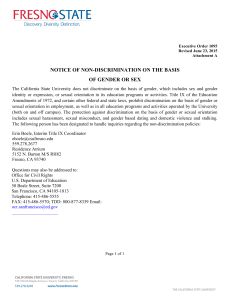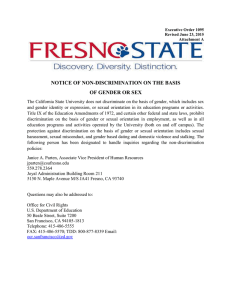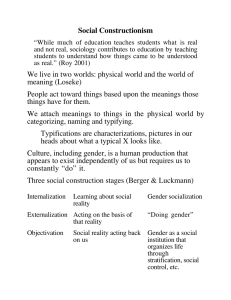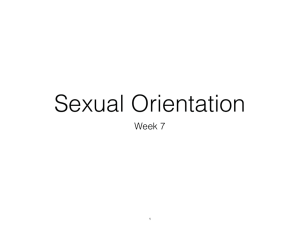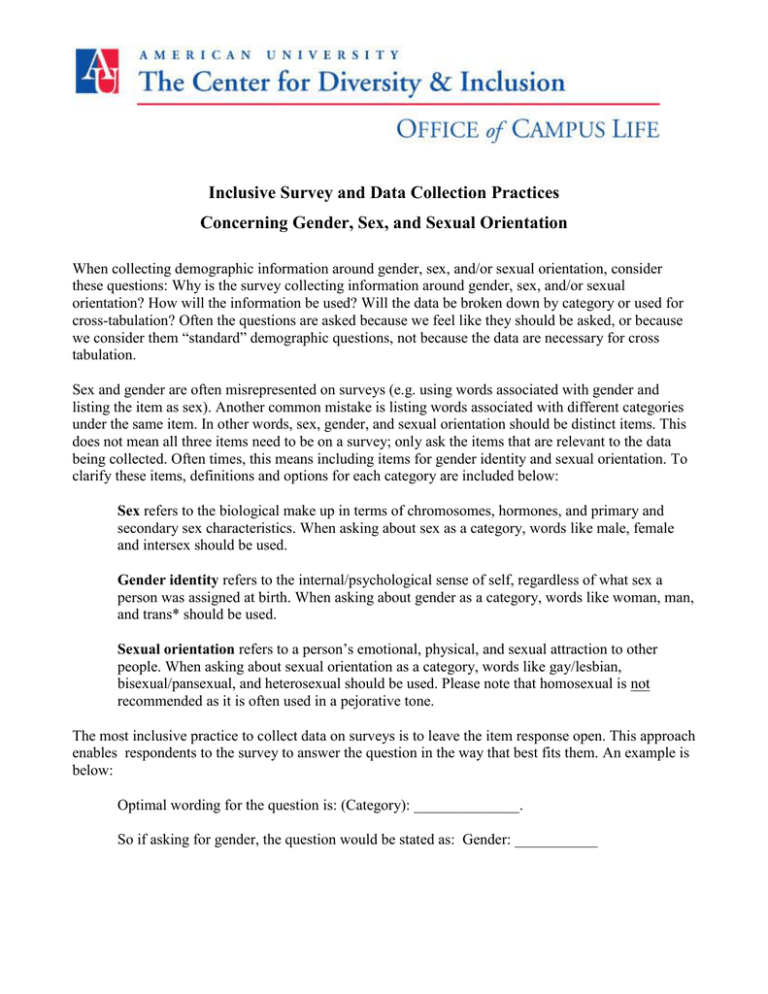
Inclusive Survey and Data Collection Practices
Concerning Gender, Sex, and Sexual Orientation
When collecting demographic information around gender, sex, and/or sexual orientation, consider
these questions: Why is the survey collecting information around gender, sex, and/or sexual
orientation? How will the information be used? Will the data be broken down by category or used for
cross-tabulation? Often the questions are asked because we feel like they should be asked, or because
we consider them “standard” demographic questions, not because the data are necessary for cross
tabulation.
Sex and gender are often misrepresented on surveys (e.g. using words associated with gender and
listing the item as sex). Another common mistake is listing words associated with different categories
under the same item. In other words, sex, gender, and sexual orientation should be distinct items. This
does not mean all three items need to be on a survey; only ask the items that are relevant to the data
being collected. Often times, this means including items for gender identity and sexual orientation. To
clarify these items, definitions and options for each category are included below:
Sex refers to the biological make up in terms of chromosomes, hormones, and primary and
secondary sex characteristics. When asking about sex as a category, words like male, female
and intersex should be used.
Gender identity refers to the internal/psychological sense of self, regardless of what sex a
person was assigned at birth. When asking about gender as a category, words like woman, man,
and trans* should be used.
Sexual orientation refers to a person’s emotional, physical, and sexual attraction to other
people. When asking about sexual orientation as a category, words like gay/lesbian,
bisexual/pansexual, and heterosexual should be used. Please note that homosexual is not
recommended as it is often used in a pejorative tone.
The most inclusive practice to collect data on surveys is to leave the item response open. This approach
enables respondents to the survey to answer the question in the way that best fits them. An example is
below:
Optimal wording for the question is: (Category): ______________.
So if asking for gender, the question would be stated as: Gender: ___________
Page 1 of 2
If leaving an open response line is not an option because you will cross tabulate data, please use the
alternative options listed below. Also, please note that the use of the word “Other” can be problematic
and marginalizing; the preferred response option for respondents to communicate that the other options
do not work for them is “Not Listed.”
1. Sex
Female
Male
Intersex
Not listed: ____________
Prefer Not to Say
2. Gender (Ideal: To which gender identity do you most identify?)
Woman
Man
Transwoman*
Transman**
Genderqueer***
Not listed: ____________
Prefer Not to Say
3. Sexual Orientation (Ideal: To which sexual orientation do you most identify?)
Heterosexual
Gay/Lesbian
Bisexual/Pansexual
Queer
Not Listed: ____________
Prefer Not to Say
* Transwoman-- — An individual who is assigned male at birth, but has a feminine gender identity.
** Transman— An individual who is assigned female at birth, but has a masculine gender identity.
**** Genderqueer: a person whose gender identity is neither man nor woman, is between or beyond genders,
or is some combination of genders. Often includes a political agenda to challenge gender stereotypes and the
gender binary system.
Page 2 of 2




